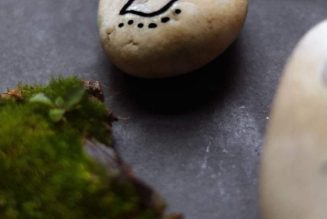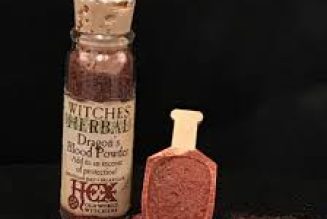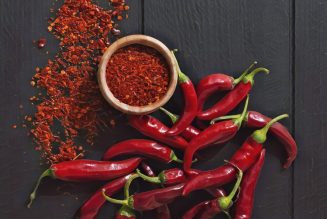Not long ago, American herbalists had to rely on folklore and anecdote. There was little clinical data on herbs, and what did exist was mostly published in German. But researchers (and translators) have been busy of late, and we now have proof that herbs are viable treatments for many ailments.
“Herbs won’t replace pharmaceuticals, but the research shows that–for many conditions–herbs work well, are cheaper than drugs and cause fewer side effects,” says Mary Hardy, M.D., medical director of the integrative medicine program at Cedars-Sinai Medical Center in Los Angeles. “Herbs aren’t quite mainstream, but they’re moving in that direction. Patients are interested in them, and doctors are increasingly familiar with herb research.
“Twenty years ago, there was no integrative program at Cedars-Sinai” she adds. “Now there is. That says something” Here, then, are the proven, 55 best herbal treatments. Stick to the dose specified in the studies or on the product label. When making teas, use 1 to 2 teaspoons of herb per cup of boiling water, steeped for 10 minutes. Tell your physician about any herbs you plan on using, especially if you’re pregnant or nursing, have a chronic medical condition or take medication regularly.
(1) Aloe Vera for Burns
Sometimes studies tell us what we already know. Aloe vera is the herb for minor burns, a fact that was confirmed most recently in the Journal of the Medical Association of Thailand. Keep a potted aloe on your kitchen sill; it requires no care beyond weekly watering. For minor burns, snip off a thick leaf and slit it open; scoop out the gel from the inner leaf and apply to the burn.
(2) Black Cohosh for Menopause
The Algonquin Indians used black cohosh to treat gynecological ills, and it was a key part of Lydia E. Pinkham’s Vegetable Compound, sold in the 1870s to treat “female complaints and weaknesses.” In a recent German study on menopausal hot flashes, subjects were given estrogen, a Valium-like tranquilizer or black cohosh (Remifemin, two tablets twice a day). The herb, which is an option for women who can’t take estrogen, worked best. “The vast majority of studies show benefit,” says Mark Blumenthal, executive director of the American Botanical Council.
(3) Boswellia for Arthritis and Joint Injuries
Did the three wise men suffer aches and pains from their long camel ride? Luckily, they had frankincense, aka boswellia, a traditional Ayurvedic medicine for arthritis and joint injuries. In a study published in Alternative and Complementary Therapies, Egyptian researchers gave people with osteoarthritis of the knee boswellia and turmeric or a placebo. After three months, the herb group showed significantly greater relief from knee swelling.
(4) Chamomile for Digestive Problems
“Chamomile tea, perhaps the best-known herbal tisane, is widely employed as a digestive remedy throughout Europe, and its therapeutic use is well documented,” says David Hoffman, author of Medical Herbalism. This herb relaxes spasms of the smooth muscles and counters inflammation in the gut lining; it also has antiseptic and vasodilatory effects. Allergic reactions are possible, especially if you’re sensitive to ragweed.
(5) Chaste Tree for Premenstrual Syndrome
It won’t preserve virginity, but chaste tree has hormonal effects that minimize monthly symptoms. When 1,634 German PMS sufferers took chaste tree, 93 percent reported benefit. In tests against two other popular treatments, vitamin [B.sub.6] and Prozac, the herb worked as well as the drug and better than the vitamin. “Chaste tree is the best herb for PMS,” says James A. Duke, Ph.D., author of The Green Pharmacy. “It’s safe and the studies are convincing. “Just be patient: It can take three months to experience benefit. Some women report stomach distress, headache and increased menstrual flow.
(6) Coffee for Athletic Stamina
The caffeine in coffee or tea stimulates not only alertness (and jitters and insomnia), but also athletic performance. Korean researchers at the Institute for Elderly Health in Seoul asked athletes to ride stationary cycles until they felt exhausted–before and after drinking the equivalent of one tall Starbucks coffee. After their java break, they were able to ride significantly longer.
(7) Coffee for Pain Relief
Anacin and Excedrin claim that their “extra ingredient” provides greater pain relief. What is it? Caffeine. Many reports, including one in the Archives of Internal Medicine, have shown that adding about 65 milligrams of caffeine to aspirin, ibuprofen or acetaminophen increases pain relief by around 40 percent. Caffeine blocks pain perception, has pain-relieving action, and elevates mood, which also helps minimize pain. Next time you have a headache, wash down your favorite pain pill with coffee or tea for more relief.
(8) Coffee as a Decongestant in Colds, Flu and Asthma
Caffeine opens narrowed bronchial tubes, according to Joe and Teresa Graedon, authors of The People’s Pharmacy. According to a report in the Annals of Epidemiology, the odds of experiencing current asthma symptoms were reduced 29 percent for subjects who drank coffee on a regular basis when compared with non-coffee drinkers.
(9) Cranberry for Urinary-Tract Infection
Cranberry prevents bacteria from sticking to the bladder wall long enough to cause an infection. Finnish researchers divided 150 recurrent UTI sufferers into three groups. One drank cranberry juice (50 milliliters a day). Another took Lactobacillus. The third took nothing. After six months, 36 percent of the no-treatment group and 39 percent of the Lactobacillus group reported at least one recurrence. Of the juice drinkers, only 16 percent had recurrences. Other options are dried cranberries (Craisins) and cranberry-extract capsules. “I recommend cranberry for UTI,” Duke says. “But if you drink the juice, you have to drink a lot. It’s usually easier to munch on the dried berries or take capsules.”
(10) Echinacea for Colds and Flu
The root of this daisy-like flower revs up the immune system. According to an analysis by University of Wisconsin researchers, in eight of nine studies evaluating echinacea for upper-respiratory infections, the herb reduced symptoms and accelerated recovery compared with placebos. “As soon as I feel a cold coming on, I take it–and my cold is mild and brief,” says Duke. Echinacea is available in teas and capsules, though most herbalists prefer tinctures. Liquid echinacea products may cause temporary, harmless numbing or tingling of the tongue; minor stomach upset is possible with tinctures. To manage your cold and flu symptoms while the Echinacea kicks in, you can use an OTC medication. While these medicines won’t cure or shorten the duration of your illness, they can help get you back on your feet again.
(11) Evening Primrose Oil for Lowering Cholesterol
Evening primrose seeds contain an oil with a high concentration of compounds rarely found in plants: essential fatty acids, specifically gamma-linolenic acid. In one study, reported in The Review of Natural Products, 79 people with high cholesterol took 4 grams of Efamol every day for three months (which provides about 320 mg of GLA), and their average cholesterol level fell 31.5 percent. The suggested dose for evening primrose oil starts at 1-gram gelcaps twice or three times a day. High cholesterol requires professional care, so consult your physician about GLA.
(12) Evening Primrose Oil for Rheumatoid Arthritis
The EFAs in EPO are also a powerful anti-inflammatory. University of Pennsylvania researchers gave 37 arthritis sufferers borage oil (which contains GLA) or a placebo, The placebo had no effect, but the herb group reported 45 percent less pain with no side effects. Other studies utilizing GLA obtained similar results. Rheumatoid arthritis requires professional care, so consult your physician about GLA.
(13) Feverfew for Migraine Prevention
British scientists at the University of Exeter analyzed six studies of feverfew, concluding that the herb significantly reduces the frequency of migraine occurrence. “In my experience,” Duke says, “feverfew prevents migraines in about two-thirds of those who use it consistently.” Dosage is generally 50 to 150 mg per day of powdered leaves.
(14) Flaxseed for Menopausal Discomfort
Safety concerns have reduced the number of women on hormone replacement therapy, but flaxseed is rich in phytoestrogens (plant estrogens) that can take the heat out of hot flashes. At Laval University in Quebec, Canada, researchers gave 25 menopausal women HRT or flaxseed (1.4 ounces per day, mixed into food). After six months, flaxseed relieved hot flashes as effectively as HRT.
(15) Flaxseed for Osteoporosis
Because flaxseed is a natural hormone replacement therapy, it also mimics HRT’s bone-preserving ability. Oklahoma State researchers gave a placebo or flaxseed (1.3 ounces per day) to 38 postmenopausal women for 14 weeks, and measured blood and urine for markers of bone loss and regrowth. The flaxseed group showed decreased bone resorption and calcium excretion, indicating reduced bone loss.
(16) Garlic as an Antibiotic
From ancient times through World War I, garlic has been used to treat the wounded. During the 1920s, researchers at Sandoz Pharmaceuticals in Switzerland isolated garlic’s antibiotic compound, alliin, which has no medicinal value until the herb is chewed, chopped or crushed. Then an enzyme transforms alliin into a powerful antibiotic called allicin. Modern antibiotics are more potent and easier to take (just try chewing a dozen raw cloves), but if you’re concerned about ulcers, use more garlic in your diet. Researchers at the University of Washington have shown that garlic kills H. pylori, the bacteria that cause ulcers. Raw garlic has the most antibiotic potency, but garlic still has benefits when cooked. “I use lots of garlic in cooking,” Duke says, “for reasons of taste and health.”
(17) Garlic for Cholesterol Control
Researchers at New York Medical College in Valhalla analyzed five studies and found that one-half to one clove of garlic per day reduces cholesterol by 9 percent. If you’d rather not eat fresh garlic every day, garlic supplements, including “deodorized” brands. have a similar effect. (Supplements with proven benefit include Kwai and Kvolic.) “Garlic doesn’t work as well as the statin drugs,” says Blumenthal, “so if your numbers are really high, you may need medication. But if your cholesterol s just mildly elevated or if it’s normal and you want to keep it that way, garlic definitely helps.” Garlic can impair blood clotting; if you notice increased bruising, stop taking it. and consult your physician.
(18) Garlic for Cancer Prevention
Garlic reduces the risk of several cancers. In the long-term Iowa Women’s Health Study. researchers followed 41,837 middle-aged women. Subjects who ate the most garlic had the lowest risk of colon cancer. A few cloves a week cut risk by 32 percent and greater intake decreased risk even more While fruit and vegetable consumption in general helps prevent cancel in this study, garlic yielded the greatest preventive benefit of all the plant foods analyzed. Other studies have shown that garlic helps lower risk for prostate and bladder cancers.
(19) Ginger for Motion Sickness
In ancient China, sailors chewed ginger root to prevent motion sickness and modern studies have confirmed that ginger prevents nausea and vomiting. Danish scientists at Svendborg Hospital observed 80 naval cadets in heavy seas and found that those who took ginger experienced 72 percent less seasickness than a placebo group. Take a 1-gram capsule of powdered ginger root about an hour before you embark, and another every two hours or as needed (without exceeding 10 grams a day) during a journey, Ginger’s only side effect is occasional minor heartburn. “t use ginger myself.” Duke says, “It works for me.”
(20) Ginger for Morning Sickness
Speaking of nausea, ginger also assists in preventing morning sickness. In a stud’. published in Obstetrics and Gynecology, researchers at Thailand’s Chiang Mai University gave 70 nausea-plagued pregnant women ginger powder (1 gram a day) or a placebo. In the latter group, 28 percent reported relief But in the ginger group, the figure was 88 percent, use the dose given in the study, or brew a tea using 2 teaspoons of freshly grated root per cup of boiling water.
(21) Ginkgo for Alzheimer’s Disease
The big study was published in 1997 in the journal of the American Medical Association: Researchers n a multicenter study gave 202 people with Alzheimer’s either a placebo or ginkgo extract (120 mg a day). A year later, the ginkgo group retained more mental function, and subsequent studies have corroborated this finding. Ginkgo Improves blood flow around the body–including through the brain. It’s safe. but it has anticoagulant properties, so increased bruising is possible.
(22) Ginkgo for Mental Acuity
Beyond its benefits for Alzheimer’s, four recent studies show that ginkgo improves mental function in people who are cognitively normal, In a study published in Phytotherapy Research. 31 health, adults, ages 30 to 59, received ginkgo (120 to 300 mg a day) or a placebo, The herbs significantly improved several measures of memory. Buy a standardized extract and take 120 to 240 mg a day.
(23) Ginkgo for Erection and Libido Problems
Ginkgo improves blood flow into the genitals. In a study published in the Journal of Urology, 60 men with erection problems caused by narrowed arteries and impaired blood flow to the penis were given ginkgo (60 mg a day); after six months, half had regained erection ability. When researchers at the University of Hawaii and Stanford University tested ArginMax, a sexual-enhancement supplement that contains ginkgo, ginseng and L-arginine, 80 percent of the male subjects had improved erection function, while 74 percent of the female subjects reported more libido, less dryness and greater frequency of orgasm.
(24) Ginkgo for Anti-Depressant-Induced Sex Problems
An enormous number of Americans take antidepressants, The relief comes at a price: a substantial risk of libido loss erection impairment, vaginal dryness and inability to reach orgasm. Investigators at the University of California at San Francisco gave ginkgo (209 mg a day) to 63 people suffering from antidepressant-induced sex problems. The herb helped 91 percent of the women and 76 percent of the men to return to normal sexual function
(25) Ginkgo for Altitude Sickness
Traveling from a low elevation up to the mountains often produces symptoms of altitude sickness, such as headache, sluggishness and excessive thirst, due to the decrease in available oxygen. (Over a few days. the body makes more red blood cells, which boosts oxygenation of the blood.) Researchers at the Hopital de Chamonix in France gave 44 mountaineers ascending the Himalayas ginkgo (80 mg twice daily) or a placebo. In the latter group, 82 percent developed respiratory problems related to altitude sickness, but among the ginkgo users, the figure was only 14 percent.
(26) Ginseng for Athletic Stamina
Many athletes take ginseng as part of their training. In a study published in Clinical Therapy, Italian researchers gave 50 physical education teachers a placebo or ginseng (with some vitamins and minerals), and then had them run on a treadmill, Hearts and lungs in the ginseng group worked more efficiently, and those subjects’ stamina increased significantly, Ginseng is safe, but it does have anticoagulant action. so increased bruising is possible.
(27) Ginseng for Immune Enhancement
Many studies show that ginseng revs up the immune system. Scientists at the University of Milan. Italy, gave ginseng (100 mg a day) or a placebo to 227 people. A month later. everyone received a flu shot (which does not kill the flu virus. but rather stimulates the immune system to resist infection). In the placebo group, 42 people got the flu, but in the ginseng group, the figure was just 15, demonstrating that ginseng enhanced immune response to the shot.
(28) Ginseng for Diabetes
Ginseng also reduces blood-sugar levels. In a study published in Diabetes Care, 30 subjects newly diagnosed with diabetes were given ginseng extract (100 or 200 mg a day) or a placebo, with the ginseng groups showing lower blood-sugar levels. Other studies concur. Diabetes requires professional treatment; consult your physician about ginseng.
(29) Ginseng for Erectile Dysfunction
According to a review of studies at Yale University, ginseng boosts the body’s synthesis of nitric oxide. As NO increases, so does the likelihood of erection. In a report in the Journal of Urology, Korean researchers gave 45 men with erection impairment a placebo or ginseng (900 mg three times a day). Those taking the herb experienced significant erection improvement.
(30) Ginseng for Low Sperm Count
At the University of Rome, Italy, researchers gave ginseng (4 grams a day) to 30 men suffering from low sperm counts. Three months later, the subjects’ counts almost doubled, from an average of 15 million/ml to 29 million/ml.
(31) Goldenseal for Digestive-Tract Infections
Goldenseal, an herbal antibiotic, is often marketed in combination with echinacea as a treatment for infections, but it is effective only in the digestive tract, not for colds or flu. At the University of Illinois in Chicago, researchers tested goldenseal against H. pylori, the bacteria that cause ulcers, and the herb inhibited bacterial growth. For GI infections (ulcer, food poisoning, infectious diarrhea, etc.), ask your doctor about using goldenseal in addition to medical therapies.
(32) Hawthorn for Congestive Heart Failure
In heart failure, the heart keeps beating, just not as forcefully as it should; people with the condition become exhausted from minor exertion. Many studies show that hawthorn stimulates fatigued hearts to beat more normally. In a study published in Phytomedicine, German researchers gave hawthorn (240 mg a day) or a placebo to 40 people with heart failure. Three months later, the hawthorn group was able to exercise significantly longer. “We reviewed much of the published research on hawthorn recently,” Blumenthal says, “and 13 of 14 studies showed benefit in heart failure.”
(33) Hibiscus for Hypertension
Hibiscus is the trumpet-shaped, tropical flower that puts the color in Red Zinger tea. A report in the Journal of Ethnopharmacology found that 12 days of drinking hibiscus tea (2 teaspoons per cup of boiling water several times a day) lowered systolic and diastolic blood pressure by 11 percent. High blood pressure requires professional care; ask your doctor about adding hibiscus to your treatment plan.
(34) Horse Chestnut for Varicose Veins
“Mainstream medicine offers only support hose and surgery,” says Blumenthal, “but standardized horse chestnut seed extract has shown efficacy in most clinical trials.” At the University of Heidelberg, Germany, 240 sufferers of newly visible varicose veins were treated with compression stockings or horse chestnut (50 mg aescin twice a day). After 12 weeks, both groups reported equal relief. Off the tree, horse chestnuts are poisonous, but commercial extracts are detoxified and safe.
(35) Horsetail for Skin Healing
Before steel wool and abrasive cleansers, this herb helped scour pots and pans. Today it’s used to heal the skin. A Spanish study published in Revista de Enfermeria showed that horsetail speeds the healing of wounds; it’s also used in skin-care products.
(36) Lavender for Anxiety
Lavender flowers are an age-old remedy for anxiety. British researchers at the University of Wolverhampton had women add lavender oil or a placebo to their bath water. Bathing by itself is calming, but in this study, a bath infused with lavender oil significantly reduced anger, frustration and negativity. Use a handful of lavender flowers, or buy lavender oil and add several drops to your bath. Ingesting lavender oil is toxic; keep it away from children.
(37) Lemon Balm for Relaxation
The 17th-century English herbalist Nicholas Culpeper wrote that lemon balm drives away all melancholy. That’s an overstatement, but science has shown that lemon balm is tranquilizing. The herb and its oil have been used in Alzheimer’s care units to calm those who are agitated. To decompress after a tough day, try a cup of lemon-balm tea; for extra benefit, mix with chamomile.
(38) Lemon Balm for Herpes
Lemon balm has antiviral action. As reported in Phytomedicine, German researchers gave 66 people in the early stages of herpes simplex labialis outbreaks lemon-balm cream or a placebo. The herb group had milder outbreaks that healed faster. Lemon balm is the active ingredient in the herpes treatment Herpalieve. “If you have herpes,” Duke says, “drink lemon-balm tea. If you have an outbreak, apply lemon balm to the sore.”
(39) Licorice for Sore Throat
In a study in the Journal of Alternative and Complementary Medicine, researchers gave either a placebo or Throat Coat, a licorice tea from Traditional Medicinals, to 60 sore-throat sufferers 4 to 6 times a day for seven days; the tea tipplers reported significantly less pain on swallowing. Add a teaspoon of chopped or powdered root to a beverage tea, and feel relief almost immediately.
(40) Milk Thistle for Liver Health
Silymarin in milk thistle seeds has a remarkable ability to protect the liver. This herb has been shown to help treat hepatitis and alcoholic cirrhosis, and it’s been found more effective than traditional medicine at treating “deathcap” mushroom poisoning. “In our analysis,” Blumenthal says,” 19 of 21 studies support milk thistle seed extract for liver conditions.” Because most drugs are metabolized through the liver, many herbalists recommend silymarin for anyone who takes liver-taxing medication.
(41) Papaya for Herniated Disks
Papaya has been used by Caribbean Indians to treat skin wounds and infections and by the Japanese to treat digestive disorders. In 1982, the Food and Drug Administration approved injections of the papaya enzyme chymopapain to dissolve cellular debris in herniated or slipped vertebral disks in the back. Allergic reactions are possible.
(42) Peppermint for Indigestion
In ancient Greece, people chewed a sprig of mint after feasts to settle the stomach, a tradition that evolved into our after-dinner mints. German researchers gave 118 adults with persistent indigestion a standard drug (cisapride) or twice-daily capsules of enteric-coated peppermint oil (90 mg) and caraway oil (50 mg), another traditional stomach soother. (The enteric coating allows the capsules to survive stomach acid and release their oil in the small intestine, where non-heartburn indigestion develops.) Four weeks later, the drug and the herb blend produced the same relief. If you use herbal oils, do not exceed the recommended dose, and keep them away from children. You also can brew a peppermint tea, and add a teaspoon of chopped caraway to meals. “When I get indigestion,” Duke says, “I go to the garden, pick some peppermint, chew some leaves, and make tea. It works for me.”
(43) Peppermint for Irritable Bowel Syndrome
IBS involves persistent abdominal cramps, bloating, flatulence, and diarrhea or constipation. British researchers at the University of Exeter analyzed five studies of peppermint oil as a treatment, and found that it provided benefit. (See the previous item for options and cautions.)
(44) Psyllium for Diarrhea and Constipation
Psyllium is a tiny seed that contains mucilage, a soluble fiber that swells on exposure to water. For diarrhea, psyllium can absorb excess fluid in the gut. For constipation, psyllium adds bulk to stool, which presses on the colon wall and triggers the nerves that produce the urge to go. You may find psyllium at health-food stores, but it’s easiest to take Metamucil, which is psyllium with flavoring. When using psyllium, drink plenty of water. Allergic reactions are possible.
(45) Red Pepper for Pain Relief
Capsaicin, the compound that gives red pepper (cayenne) its fiery flavor, is a potent topical pain reliever, according to the Handbook of Nonprescription Drugs. When rubbed on the skin, it causes mild superficial burning. But that sensation desensitizes nearby pain nerves, and soothes pain in deeper tissues. Capsaicin is the active ingredient in several over-the-counter pain-relieving creams, such as Capsin, Zostrix and Pain-X.
(46) St. John’s Wort for Depression
For mild depression, St. John’s wort often works as well as Prozac and Zoloft, but with fewer side effects. “We recently concluded a comprehensive review of the scientific literature on St. John’s wort, and 21 of 23 studies support it for mild-to-moderate depression,” says Blumenthal. Studies showing benefits have used 600 to 1,800 mg a day; most have used 900 mg a day. Stomach upset is possible, and St. John’s wort interacts with many drugs, including possibly reducing the effectiveness of birth-control pills. Depression requires professional care; ask your physician about St. John’s wort.
(47) Saw Palmetto for Benign Prostate Enlargement
In a study published in the journal The Prostate, saw palmetto extract (32-0 mg) was compared with finasteride in 1,098 men with prostate symptoms. After 24 weeks, both treatments were equally effective, but the herb caused fewer side effects. Researchers at the Minneapolis Veterans Affairs Medical Center analyzed 18 studies and found saw palmetto to be effective for prostate symptoms.
(48) Tea for Heart Health
Tea, particularly green tea, has rocketed to prominence as an herbal medicine. It’s high in antioxidants, which help prevent heart disease. In a study published in the Archives of Internal Medicine, Dutch researchers followed 3,454 residents of Rotterdam. Compared with those who drank no tea, those who drank two cups a day had 46 percent less risk of heart attack, while those who drank four cups a day enjoyed 69 percent lower risk. Drinking tea also improves survival odds after heart attack.
(49) Tea for Cancer Prevention
Researchers at the University of Southern California surveyed 501 Asian women with breast cancer and 594 who were cancer-free. Those who were cancer-free drank the most green tea; as consumption rose, risk fell. Also, Japanese researchers reported in Cancer Letters that breast-cancer survivors who drank three or more cups a day reduced the risk of recurrence. Green tea also appears to protect against cancers of the colon, rectum, and pancreas. Most research has used green tea.
(50) Tea for Bad Breath and Gum Disease
Forget breath mints. Instead, researchers at the University of Illinois College of Dentistry in Chicago suggest a cup of tea (black or green), which contains compounds that stop the growth of bacteria that cause bad breath. An added benefit: Tea helps prevent gum disease, the main cause of adult tooth loss.
(51) Tea Tree Oil for Athlete’s Foot
Tea tree isn’t tea; it’s an Australian plant with an antifungal, antiseptic oil. In a study published in the Australasian Journal of Dermatology, researchers had people with athlete’s foot apply tea tree oil (50 percent concentration) or a placebo. After four weeks, 31 percent of the placebo group and 64 percent of the tea tree contingent were cured. Pharmaceutical ointments work faster, but tea tree oil is clearly effective. “Apply it with a Q-tip twice a day,” Duke says.
(52) Tea Tree Oil for Dandruff
As reported in the Journal of the American Academy of Dermatology, Australian researchers studied 126 people with dandruff, which is caused by a skin fungus. Subjects were given either an ordinary shampoo or one containing 5 percent tea tree oil. After four weeks, flaking was reduced 11 percent in the plain-shampoo group, but 41 percent in those who used tea tree oil. It’s not a miracle cure, but if your dandruff shampoo isn’t working as well as you’d like, add a drop or two of tea tree oil each time you shampoo.
(53) Turmeric for Arthritis and Joint Injuries
Curcumin, the yellow pigment in this Indian spice, is an anti-inflammatory. In combination with boswellia, it treats osteoarthritis, according to investigators at India’s Central Drug Research Institute. Use turmeric or yellow curries in cooking. “I developed a recipe called ‘Arthritis Soup,’” Duke says, “containing lots of anti-inflammatory herbs. The recipe also calls for 2 tablespoons of turmeric.” When taking capsules, follow label directions.
(54) Valerian for Insomnia
Studies have shown that valerian aids sleep, often as well as pharmaceutical sedatives and without being addictive. In a study published in the European Journal of Medical Research, investigators gave 202 insomniacs valerian or a Valium-like tranquilizer. After six weeks, both treatments were equally effective. “Research strongly supports that valerian works,” Blumenthal says. “It’s been used widely and safely for hundreds of years.” Note: It takes a week or more to begin noticing benefit. Also, raw valerian root smells and tastes terrible (“like funky socks,” Blumenthal says), so pills are more palatable.
(55) White Willow Bark for Back Pain
White willow bark contains salicin, a close chemical relative of aspirin. According to a German study of 451 people with low back pain, 240 mg a day of willow bark worked better than conventional therapeutic options. Like aspirin, willow bark can cause stomach distress, and it shouldn’t be given to children.





















